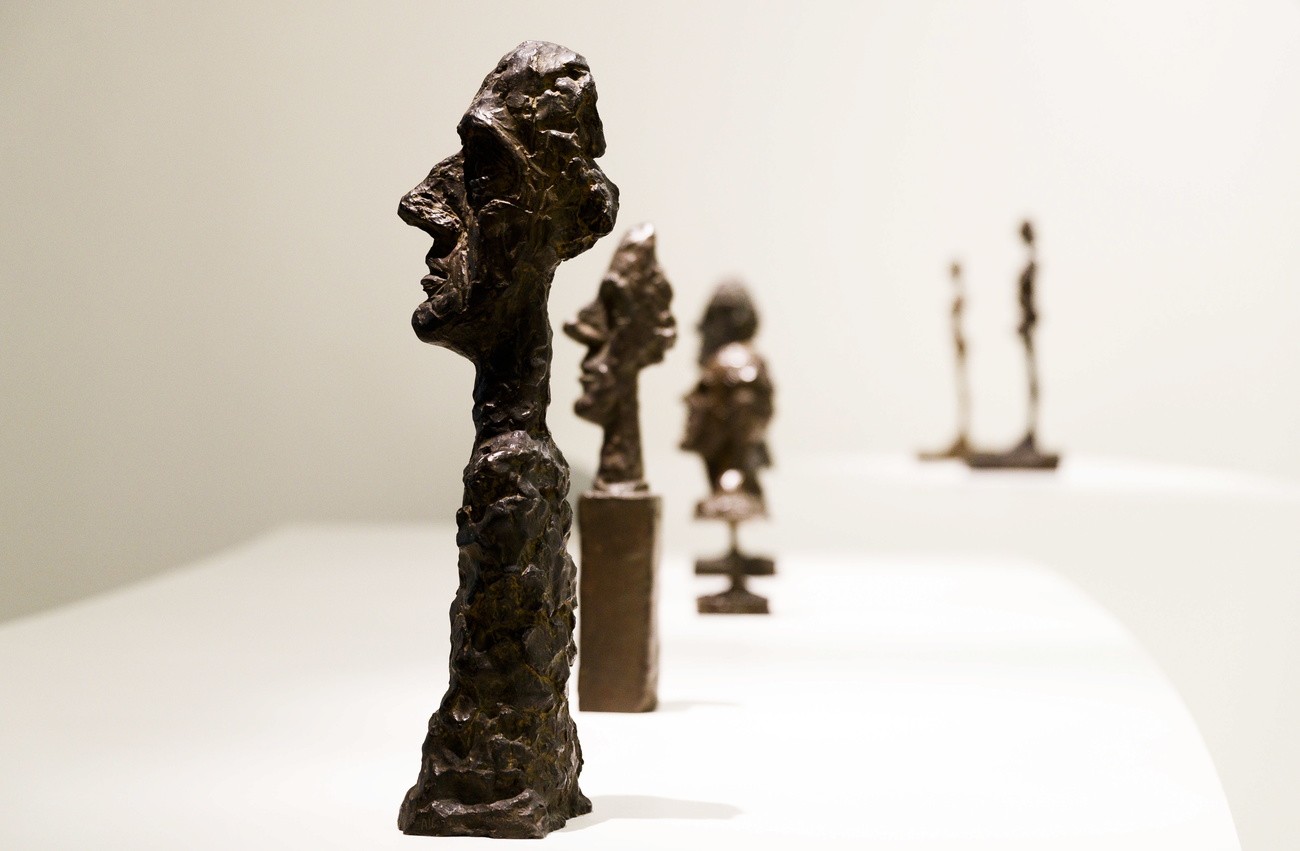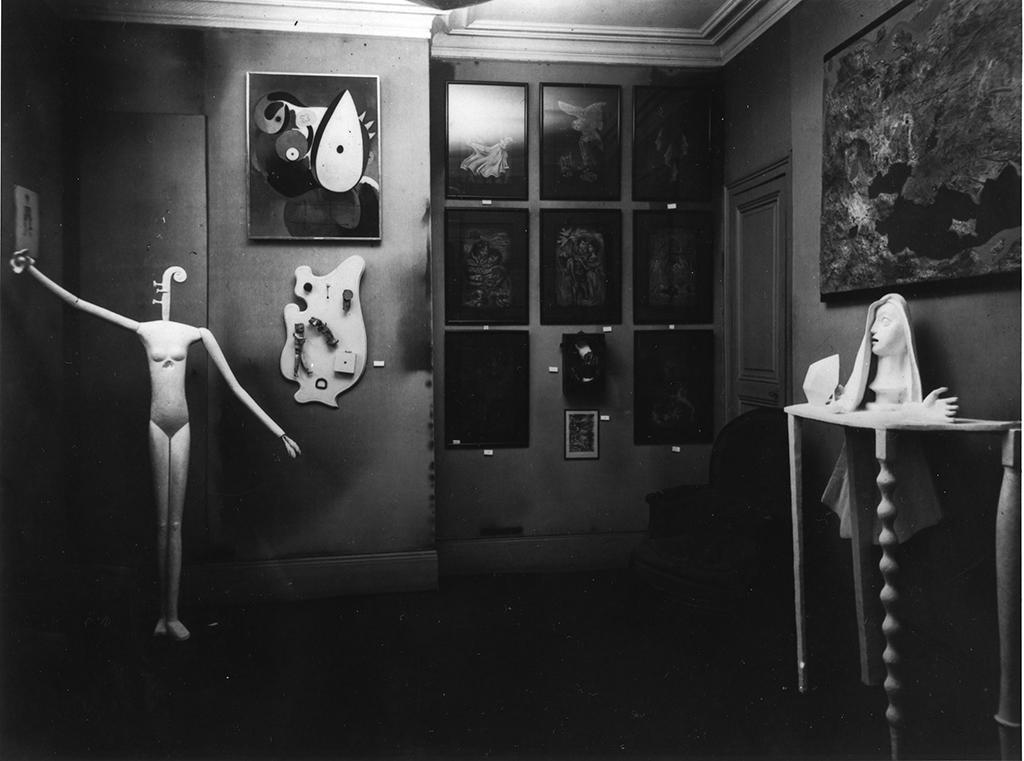
Works of Swiss artist Giacometti in Paris headed for new, grander museum

The Giacometti Museum is set to open in 2028 on the Esplanade des Invalides, a vast green expanse in central Paris. It is a prestigious location for Alberto Giacometti, an artist who spent most of his life working in a modest 16-square-metre studio. Is the new space too luxurious for such a minimalist figure? The question is stirring debate.
The future Giacometti Museum will be established in 2028 in a rather imperial part of Paris. Overlooking the Seine, the site is part of a grand architectural axis stretching from the ornate Pont Alexandre III – a bridge built in honour of a Russian tsar – to Les Invalides, home to Napoleon’s tomb. It’s a neighbourhood of gold-leaf facades, military history, and embassies, including the Swiss embassy, just 100 metres or so away.
The museum will occupy the former Invalides train station, which is currently undergoing renovation. At present, only metro passengers still pass through, navigating scaffolding and accompanied by the sound of jackhammers. It’s still only a decade since Parisians came here to get vaccinations before travel, or to board buses to Orly Airport.
Once completed, the building’s 6,000 square metres will house several versions of Walking Man and many other works by the iconic Swiss artist.
To be exact, half the space will be used for shops, restaurants, and educational activities, while the other half will be dedicated to exhibitions. That means 3,000 square metres for Giacometti: it’s impressive, but is it also a bit over the top?
The Alberto and Annette Giacometti Foundation, which will manage the museum, welcomes the prospect of so much space. Until now, it had to make do with the charming but tiny Giacometti Institute. But others lament the grand scale of the project and regret the artist’s departure from Paris’s more down-to-earth 14th arrondissement.

More
Giacometti museum and school to be built in Paris
Giacometti in the Pantheon
“I don’t get excited when artists are placed in a kind of Pantheon,” says the French-Swiss architect and sculptor Serge Lemeslif. “To me, Alberto stands for simplicity. In 1962, when I was working on Rue des Plantes, I saw him leaving his studio to have lunch at the Rendez-vous des camionneurs [a café for lorry drivers]. Those were the days,” he says.
In 1926, Giacometti set up his tiny studio at 46, Rue Hippolyte-Maindron in the Alésia neighbourhood, where he remained until his death in 1966. The space, just 16 square metres, has since been immortalised by photographers like Henri Cartier-Bresson and the Switzerland-born René Burri. The image of Giacometti in his wool jacket, surrounded by creative chaos, is now part of the legend.
“The most beautiful Giacometti statue I ever saw was under the table,” the playwright Jean Genet once wrote. “I bent down to pick up a cigarette butt and saw it hidden in the dust. He kept it out of sight – a visitor’s foot might have damaged it.” Genet also recalled rain leaking into the room. “With a heavy heart, he submitted to tiling the floor, with the prettiest but humblest tiles he could find,” Genet wrote. “He told me he would never live anywhere else but this studio and his room.”

Image or reality?
Was Giacometti’s ascetic lifestyle a carefully constructed image, or his actual way of life? The art historian Véronique Wiesinger offers this view in the catalogue for a major 2007 Giacometti exhibition at the Pompidou Centre in Paris: “This hard way of life, detached from all material possessions and physically exhausting, is more than a colourful detail of the artist’s mythology. This sparseness was a deliberate asceticism, inseparable from his artistic vision.”
So is it time to let go of the frugal Giacometti of Montparnasse and Alésia, neighbourhoods once home to painters like Pablo Picasso, Chaïm Soutine and Man Ray?
“Displaying his work in a luxurious setting is almost in bad taste,” the painter Pierre Lamalattie complains in Causeur magazine. “The motive is a simple commercial one: bringing the foundation to the tourists in central Paris.” He also questions how the 3,000 square metres of exhibition space will be filled: “One Giacometti looks very much like another,” he says.

More
Giacometti – a communist, but above all free
Not everyone agrees. François Kneuss, a native of the Jura region who has been guiding Swiss tourists around Paris for nearly 50 years, sees value in the project. “The old Invalides station dates from Giacometti’s time. He must have passed through it — he often had coffee at Les Deux Magots cafe on boulevard Saint-Germain, a stone’s throw from the station. I don’t see the problem. The fact is, there’s still no proper Giacometti museum, and that’s regrettable for an artist of his stature.”
Neighbourhood concerns
In addition to concerns about Giacometti leaving the 14th arrondissement, there are some objections to his arrival in the wealthier 7th district. Some local politicians close to the district mayor, Rachida Dati (who also serves as France’s culture minister and is a known opponent of the mayor of Paris, Anne Hidalgo) argue that the project will alter the historic landscape of the Esplanade des Invalides: plans to raise the station’s roof by two metres and reveal old access shafts will spoil the view corridor from the Grand Palais to Les Invalides, they say.
“We weren’t consulted about this project,” says Xavier de Maistre, president of the 7th arrondissement residents’ association. “We’re not necessarily against it, but it’s disappointing not to be heard, especially when this might intensify over-tourism in a neighbourhood already losing residents to investors and short-term rentals.”
A million visitors a year
“Giacometti chose to live in Paris [and] we’ve chosen to stay here,” says Catherine Grenier, director of the Alberto and Annette Giacometti Foundation. “The current institute can only show a minute portion of the collection. The rest – some 10,000 works, including drawings, sculptures, and paintings – is stored in warehouses in the suburbs.”
“The new ‘museum-school’ will feature a permanent collection and rotating exhibitions,” she adds. The school will be a non-degree art education space covering 1,000 square metres. “The business plan is in place,” Grenier explains. “We’re aiming for a million visitors per year.”
In the meantime, the original, delightful Giacometti InstituteExternal link on Rue Victor Schoelcher, near Montparnasse cemetery, continues to welcome curious or nostalgic visitors.

More
Giacometti’s lost works reappear at Paris show
Translated from French by Catherine Hickley/gw

In compliance with the JTI standards
More: SWI swissinfo.ch certified by the Journalism Trust Initiative
















![The four-metre-long painting "Sonntag der Bergbauern" [Sunday of the Mountain Farmers, 1923-24/26] had to be removed by a crane from the German Chancellery in Berlin for the exhibition in Bern.](https://www.swissinfo.ch/content/wp-content/uploads/sites/13/2025/12/01_Pressebild_KirchnerxKirchner.jpg?ver=a45b19f3)










You can find an overview of ongoing debates with our journalists here . Please join us!
If you want to start a conversation about a topic raised in this article or want to report factual errors, email us at english@swissinfo.ch.